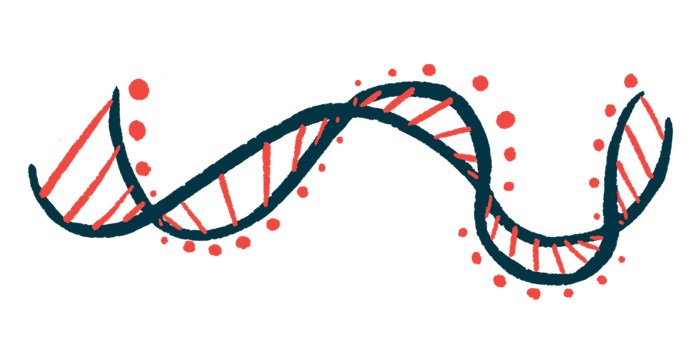Missing SNORD116 Gene Cluster May Make Fat Cells Go Awry Early in PWS
Findings shed light on how obesity may be tackled in early disease stage
Written by |

Cells of adipose tissue, or body fat, may go awry long before weight gain takes off in children with Prader–Willi syndrome (PWS), according to a new study — and a missing cluster of genes called SNORD116 may be the reason why.
The findings add information about what’s behind the increased appetite seen in PWS patients, and how obesity may be tackled from an early stage of the disease, the researchers noted.
“Hopefully, on the basis of this study, novel therapeutically relevant options, such as metabolic interventions … and promoting healthy [adipose tissue] expansion, are warranted to be initially explored for managing PWS obesity,” the team wrote, adding that the goal would be “to fill the gap between basic research and clinical care of PWS patients.”
The study, “Dysregulated adipose tissue expansion and impaired adipogenesis in Prader–Willi syndrome children before obesity-onset,” was published in the journal Metabolism.
Prader-Willi syndrome occurs as a result of missing or faulty genetic information in a region of chromosome 15 called the PWS locus.
This region contains genes that code for the proteins needed to control growth, sleep, and appetite. When these genes are absent or impaired, it can lead a range of symptoms, from learning difficulties and a delay in development, to sleep problems, a short stature, and an increased appetite that may lead to overweight and obesity.
The PWS locus also contains clusters of non-coding genes, which do not provide instructions for making proteins. Among these are genes that instead provide instructions for making a type of molecule called small nucleolar RNA that serves other functions, including assisting in chemical modifications of other RNA molecules.
Investigating the SNORD116 genes
There is one particular cluster of genes, known as SNORD116, that has been linked to PWS. It is not known how a missing SNORD116 causes PWS, but even small deletions appear to be enough to bring about the symptoms of the disease.
Some PWS manifestations, such as weak muscle tone, are typically noticed shortly after birth. But others, such as a gain of excessive weight, usually start to occur a few years later, around the ages of 2 to 6.
At that stage, children start to show an increased interest in food that continues into adolescence and adulthood — and makes patients more likely to overeat if they have the opportunity. An excessive and insatiable appetite is a hallmark feature of Prader-Willi syndrome.
Now, a team of researchers in China sought to find out what may lead to overweight and obesity at a younger stage in PWS patients.
To that end, the researchers collected samples of white adipose tissue — a type of fat where energy is stored — from the groin area of six baby boys with PWS. Their ages ranged from 6 months to 2 years. As controls, the researchers collected samples of fat from 12 healthy male infants of about the same age.
Compared with controls, babies with PWS had fewer yet larger cells known as adipocytes, which specialize in storing energy as fat.
“Unusual fat expansion occurred long before obesity onset,” the researchers wrote, noting a “massive enlargement” of these adipocytes.
The boys with PWS also had more dead adipocytes and more macrophages, a type of immune cell that can remove dead cells from tissues and trigger inflammation.
When the researchers grew the adipocytes in the lab for 14 days, they found that those of babies with PWS made fewer fat droplets and had less of a type of fat called triglycerides. They also released less leptin and adiponectin, two hormones that control the amount of fat in the body to help it keep a normal weight.
Gene and protein markers of beige adipocytes, which reside within white adipose tissue and use their energy to generate heat, also were decreased in the adipocytes of babies with PWS versus controls.
To find out whether this could be due to differences in gene expression, or activity, the researchers looked at which genes were switched on or off in the adipocytes. There were differences in a total of 1,203 genes, many of which were found to be involved in how adipocytes develop, grow, and use glucose (sugar).
The list also included genes located in the SNORD116 cluster.
In other experiments, the researchers toned down the SNORD116 gene cluster in adipocyte-derived mesenchymal stem cells, and watched how this turned out for beige adipocytes. Again, they found that markers of beige adipocytes were reduced, indicating that “SNORD116 deficiency plays a part.”
Now, more research is necessary “to explore the potential relevance,” the scientists say.
“It is crucial to understand whether and how these primary defects in the abnormal fat accumulation pathway are mechanistically associated with the progressive trajectory of obesity development in subsequent PWS phases,” the team concluded.






